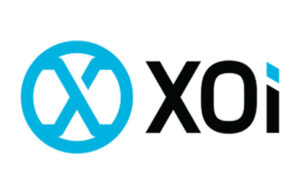By J.P. Cahalan

Most contractors look forward to peak seasons in the HVAC industry, when they can land more jobs, keep technicians busy and generate more revenue.
But the busy months of the year can be full of lost opportunities. Business owners who neglect to properly manage the increased demand for services during busy seasons may be leaving substantial amounts of revenue on the table every year.
Failing to maximize revenue when your company is busy may indicate structural inefficiencies that could have a much more noticeable impact on your bottom line when the next shoulder season arrives.
Lost opportunity in a busy season inevitably means leaving work and market share open to your competitors, making your company more vulnerable when business inevitably slows down. If customers can’t get the service they need, or the service they receive is poorly executed because your technicians are overworked, you risk losing their trust and seeing your reputation damaged.
 So, field service professionals: Don’t take busy seasons for granted. Anticipating the opportunities that come with the heating and cooling seasons will help contractors be more effective and successful in every aspect of the business. By managing increased demand strategically, you can generate more leads, close more sales, increase the money coming into the business, build a foundation of recurring business, and elevate the customer experience.
So, field service professionals: Don’t take busy seasons for granted. Anticipating the opportunities that come with the heating and cooling seasons will help contractors be more effective and successful in every aspect of the business. By managing increased demand strategically, you can generate more leads, close more sales, increase the money coming into the business, build a foundation of recurring business, and elevate the customer experience.
How can owners ensure they’re getting the biggest return from their business during the coming heating season? It all starts with empowering technicians in the field. Equipping them with technology solutions designed to streamline their workflows and leverage historical and real-time jobsite data to deliver business insights can transform how contractors navigate the busy seasons.
Here are some key recommendations for deploying technology to maximize revenue opportunities and profitability:
- Employ automation: Manual processes are one of the most time-consuming frustrations for technicians in the field. Whether it’s entering the make, model and serial number of an HVAC unit, or writing out a descriptive summary to communicate the scope of work to a client, these tedious tasks extend a technician’s time on site. On top of that, manual data entry increases the risk of errors in documentation. Automating these workflows with digital field solutions streamlines service and eliminates the risks associated with manual data entry.
- Promote the use of technician-focused technology: When working on a complex repair or intricate piece of equipment, it’s not uncommon for an onsite technician to call in for feedback or additional support to get the job done. While this is a useful step toward accuracy and efficiency, it adds time to any job. If the technician is playing telephone tag or has other obstacles to real-time communication, it can introduce additional opportunities for errors to enter the job. Contractors can prevent these delays and mistakes by investing in tools with vast sets of data that save technicians and customers valuable time. It’s a simple, quick solution for complicated jobs. Technician-focused technology with information and insights provides immediate access to resources that help technicians complete jobs faster, increase accuracy and customer satisfaction, and reduce second truck rolls.
- Learn how to take action on advanced analytics: Tech-first technology manages large amounts of data quickly to identify patterns and draw insights. It enables field service technicians to identify service and sales opportunities that might otherwise go unnoticed. For example, advanced analytics can help field service technicians identify patterns in equipment, such as when a particular machine breaks down frequently. This information can be used to recommend upgrades or replacements, increasing sales and improving customer satisfaction.
- Manage your inventory: Running out of parts and equipment when you need it slows you down and frustrates customers. But you don’t want to store more inventory than you need, and you don’t want to find yourself holding onto obsolete or unnecessary items when spring rolls around. Using digital tools powered by AI and data science, contractors can continuously monitor trends and maintain inventory. Sharing relevant data provides distributors and manufacturers with insights they can use to make informed decisions about seasonal, service and sales trends, such as identifying increased demand for particular parts and equipment, popular new products and consumer habits.
- Know the status of your equipment roster: Contractors can automatically analyze all the equipment their company works on and identify units nearing the end of their operational life. Team members can reach out to customers and schedule critical maintenance or replacement before the equipment fails. By proactively scheduling the job, they can better predict the expenses associated with it, including the number of techs and any special tools or parts that might be required. Customers benefit from the preventive service, helping to build trust and contribute to repeat business.
It’s easy for contractors to stay busy during winter heating and summer cooling seasons. But coasting through those months will do you no favors come the slow seasons that follow. If you focus on your strengths and empower your teams to seize every opportunity when it’s busy, you can set up a financial foundation to support you through slower months. You’ll also be delivering superior service and enhancing the job experience of your technicians and other team members – all while maximizing your financial return year-round.
J.P. Cahalan is senior process engineer at XOi. He’s responsible for helping customers find multi-layered value and success with the XOi platform. Believing that change is something that is necessary for businesses to grow, J.P. has an acute understanding of customer behavior, and knows that change is not something that should be taken lightly.








